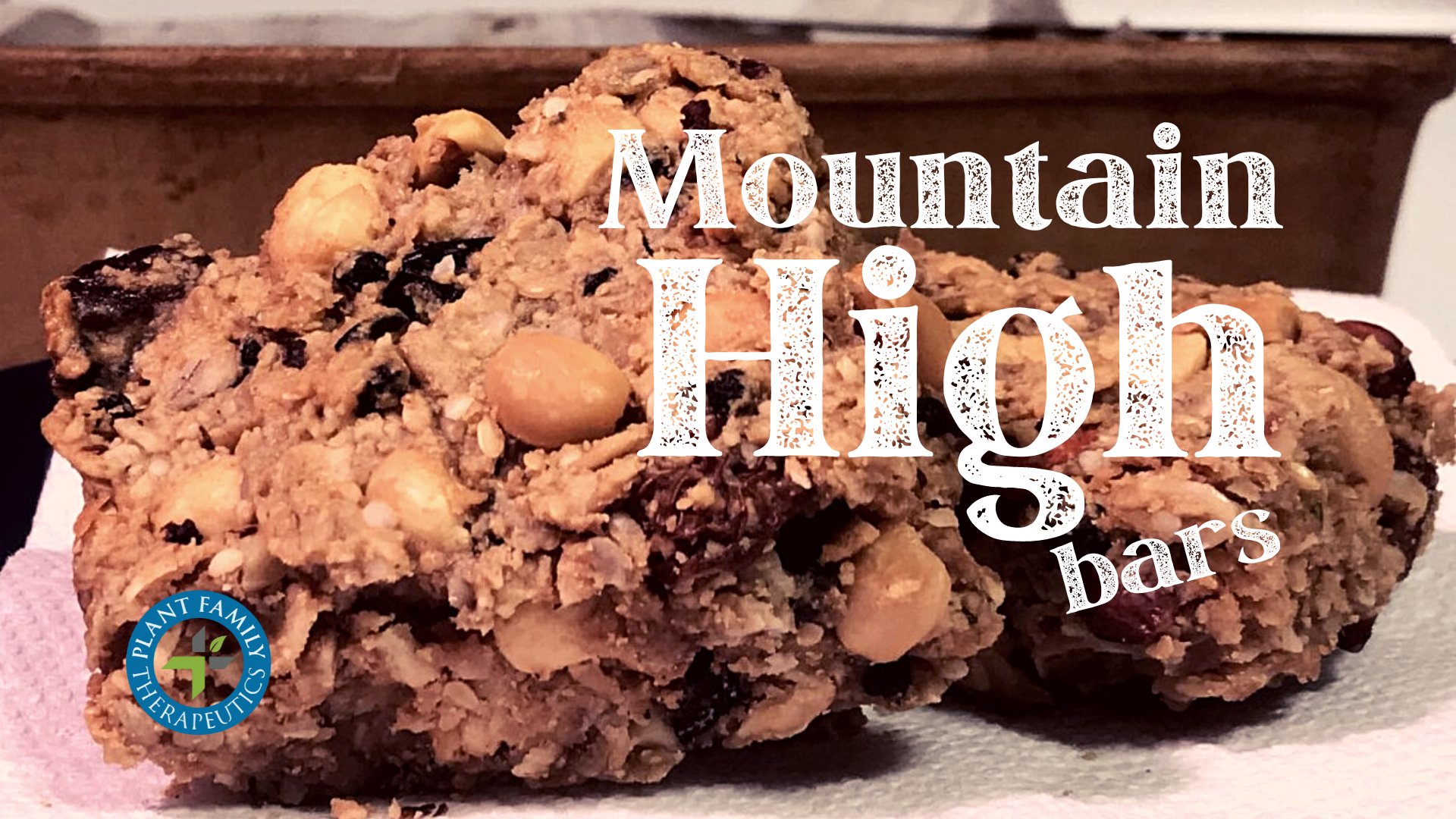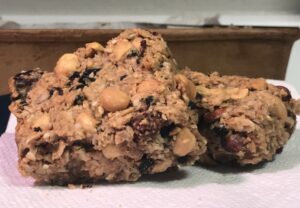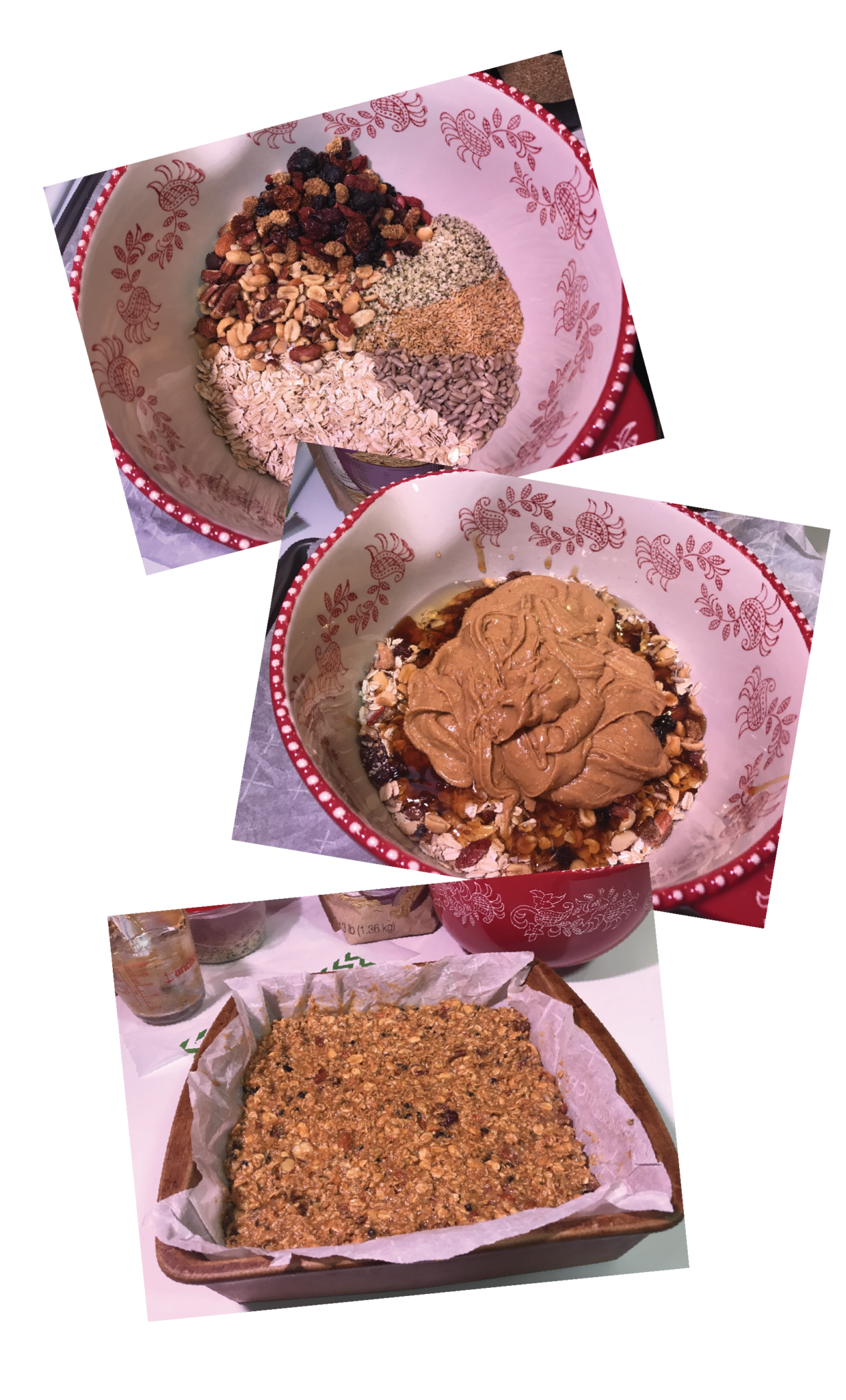This website requires you to be 21 years or older to enter. Please confirm your age below to continue.

These incredibly tasty nut bars are packed with goodness to satisfy the hunger within. Whether you’re working around the house, going for a hike, or hanging out on the river, Mountain High Bars are a quick and healthy way to medicate throughout your day and keep you on the move.
Oats are among the healthiest grains on earth and nuts are a great source of nutrients, such as protein, healthy fats, fiber, vitamins, and minerals. What’s more, research suggests that eating oats and nuts helps in supporting healthy body weight and reduces the risk of certain health conditions, including heart disease.
Before we dive into the recipe, let’s take a look at some nutritional facts –
Rolled Oats – a healthy grain that is gluten-free and a great source of important vitamins, minerals, fiber, and antioxidants. Health benefits include weight loss, lower blood sugar levels, and reduced risk of heart disease. A good source of essential amino acids and antioxidants. Contains a powerful fiber that reduces LDL cholesterol, reduces blood sugar and insulin response, increases the feeling of fullness, and increases the growth of good bacteria in the gut.
Almonds – rich in Vit E, supports immune function and cellular communication, reduce heart disease risk factors, and promotes gut health.
Pistachios – lower in calories and fat than most nuts, a good source of Vit B6, high in antioxidant and inflammatory properties, and may improve high blood pressure.
Walnuts – an excellent source of copper that is involved in energy production and neurotransmitter synthesis, and aids in immune function, blood vessel development, and more. Reduces the risk of heart disease, improves brain function, and may reduce the risk of dementia.
Cashews – promote bone health, a good source of Vit K, magnesium, and manganese. May lower triglyceride levels and reduces blood pressure. May improve blood fat levels.
Pecans – good source of zinc and manganese, promotes good heart health.
Macadamia nuts – high in healthy fats like Vit B1, may reduce bad cholesterol, triglycerides, and blood sugar levels.
Brazil nuts – high in selenium, also Vit E, and magnesium.
Peanuts – technically belong to the legume family, a rich source of protein, high in folate, and may benefit heart health.
Flaxseed – may lower the risk of cancers, help maintain a healthy weight, reduces cholesterol and blood pressure. A good source of protein, fiber, and omega-3 fatty acids. High in thiamine and a great source of copper.
Hemp Seeds – technically a nut, this seed is exceptionally nutritious and rich in healthy fats, proteins, and minerals. Rich in omega- 6 and omega- 3 fatty acids – essential for immune system support. A great source of protein, Vit E, and minerals. Reduces the risk of heart disease, inflammation, and may lower blood pressure.
Sunflower seeds – are rich in healthy fats, vitamins, and minerals. High in Vit E, selenium, magnesium, copper, and antioxidants. Properties to promote anti-inflammation, lower blood pressure, lower cholesterol, and lower blood sugar levels.
Raw honey – high-quality honey is rich in antioxidants that protect the body against cellular damage. Reduces inflammation and improves blood sugar regulation. May protect your heart and promote heart health.
*Medicated Honey by Good Day Farm has 9 mg THC per teaspoon. The number of teaspoons will determine the full dosing of your 9×9 pan. For example: If you want 4 mg of THC per bar then add four teaspoons of medicated honey to regular honey to make a total of ½ cup honey.
Example dosing : If you use 9 mg THC (1 tsp) x 4 tsp = 36 mg THC for the entire pan. Cutting into 9 bars gives you 4 mg of THC per bar. Adjusting the dose is easy. A 7 mg bar = 7 tsp x 9 mg = 63 mg THC, divided by the number of servings, we want 9 bars, so 9 x7 = 63 divided by 9 bars = 7 mg THC per bar.
It is always recommended to start with a lower dose, typically 2 mg THC is a good starting point for new consumers or for those who want to microdose.
Enjoy and Here’s to your health!
Prep time : 15 min
Cook Time : 15-20 min
Oven Temp : 350
9×9 pan lined with parchment paper

Ingredients:
• 2 cups rolled oats
• 2 cups total of dry nuts, seeds, dried fruit, chocolate chips, etc.
• 1 cup nut butter of your choice
• ½ cup infused honey (*see below)
• 2 egg whites (optional, add softness)
In a large bowl mix dry ingredients. Next, add wet ingredients to dry and mix completely, may need to use your hands here. Once mixed, pour the mixture into a lined 9×9 pan and spread it out evenly. Bake at 350 for up to 20 minutes. When done, remove from oven and cut into desired portions while in the pan. Allow bars to completely cool. Store bars in the refrigerator for up to 2 weeks.
When adding seeds, start with one to two tablespoons of each seed being added. The flavor of your nut butter will determine the overall taste of your bar. An overuse of nut mix will result in a drier more crumbly bar. There are no limits here and you can get as creative as your imagination allows

References
Al-Khalifa, A., Maddaford, T. G., Chahine, M. N., Austria, J. A., Edel, A. L., Richard, M. N., Ander, B. P., Gavel, N., Kopilas, M., Ganguly, R., Ganguly, P. K., & Pierce, G. N. (2007). Effect of dietary hempseed intake on cardiac ischemia-reperfusion injury. American journal of physiology. Regulatory, integrative and comparative physiology, 292(3), R1198–R1203. https://doi.org/10.1152/ajpregu.00661.2006
Bashir, K., & Choi, J. S. (2017). Clinical and Physiological Perspectives of β-Glucans: The Past, Present, and Future. International journal of molecular sciences, 18(9), 1906. https://doi.org/10.3390/ijms18091906
Bennett, L. E., Singh, D. P., & Clingeleffer, P. R. (2011). Micronutrient mineral and folate content of Australian and imported dried fruit products. Critical reviews in food science and nutrition, 51(1), 38–49. https://doi.org/10.1080/10408390903044552
Calado, A., Neves, P. M., Santos, T., & Ravasco, P. (2018). The Effect of Flaxseed in Breast Cancer: A Literature Review. Frontiers in nutrition, 5, 4. https://doi.org/10.3389/fnut.2018.00004
Chang, C. S., Sun, H. L., Lii, C. K., Chen, H. W., Chen, P. Y., & Liu, K. L. (2010). Gamma-linolenic acid inhibits inflammatory responses by regulating NF-kappaB and AP-1 activation in lipopolysaccharide-induced RAW 264.7 macrophages. Inflammation, 33(1), 46–57. https://doi.org/10.1007/s10753-009-9157-8
Dzuvor, C., Taylor, J. T., Acquah, C., Pan, S., & Agyei, D. (2018). Bioprocessing of Functional Ingredients from Flaxseed. Molecules (Basel, Switzerland), 23(10), 2444. https://doi.org/10.3390/molecules23102444
Flax seed https://fdc.nal.usda.gov/fdc-app.html#/food-details/169414/nutrients
Oats https://fdc.nal.usda.gov/fdc-app.html#/food-details/173904/nutrients
Guasch-Ferré, M., Liu, X., Malik, V. S., Sun, Q., Willett, W. C., Manson, J. E., Rexrode, K. M., Li, Y., Hu, F. B., & Bhupathiraju, S. N. (2017). Nut Consumption and Risk of Cardiovascular Disease. Journal of the American College of Cardiology, 70(20), 2519–2532. https://doi.org/10.1016/j.jacc.2017.09.035
Guo, S., Ge, Y., & Na Jom, K. (2017). A review of phytochemistry, metabolite changes, and medicinal uses of the common sunflower seed and sprouts (Helianthus annuus L.). Chemistry Central journal, 11(1), 95. https://doi.org/10.1186/s13065-017-0328-7
Han, J., Lu, S. S., Wang, Z. J., & Li, Y. L. (2015). Flax seed oil inhibits metastatic melanoma and reduces lung tumor formation in mice. Journal of B.U.ON. : official journal of the Balkan Union of Oncology, 20(6), 1546–1552.
Kajla, P., Sharma, A., & Sood, D. R. (2015). Flaxseed-a potential functional food source. Journal of food science and technology, 52(4), 1857–1871. https://doi.org/10.1007/s13197-014-1293-y
Kundu, J. K., & Chun, K. S. (2014). The promise of dried fruits in cancer chemoprevention. Asian Pacific journal of cancer prevention : APJCP, 15(8), 3343–3352. https://doi.org/10.7314/apjcp.2014.15.8.3343
Landete J. M. (2012). Updated knowledge about polyphenols: functions, bioavailability, metabolism, and health. Critical reviews in food science and nutrition, 52(10), 936–948. https://doi.org/10.1080/10408398.2010.513779
Liu, L., Zubik, L., Collins, F. W., Marko, M., & Meydani, M. (2004). The antiatherogenic potential of oat phenolic compounds. Atherosclerosis, 175(1), 39–49. https://doi.org/10.1016/j.atherosclerosis.2004.01.044
Liu, X., Guasch-Ferré, M., Drouin-Chartier, J. P., Tobias, D. K., Bhupathiraju, S. N., Rexrode, K. M., Willett, W. C., Sun, Q., & Li, Y. (2020). Changes in Nut Consumption and Subsequent Cardiovascular Disease Risk Among US Men and Women: 3 Large Prospective Cohort Studies. Journal of the American Heart Association, 9(7), e013877. https://doi.org/10.1161/JAHA.119.013877
Mihoc, M., Pop, G., Alexa, E., & Radulov, I. (2012). Nutritive quality of romanian hemp varieties (Cannabis sativa L.) with special focus on oil and metal contents of seeds. Chemistry Central journal, 6(1), 122. https://doi.org/10.1186/1752-153X-6-122
Nie, L., Wise, M. L., Peterson, D. M., & Meydani, M. (2006). Avenanthramide, a polyphenol from oats, inhibits vascular smooth muscle cell proliferation and enhances nitric oxide production. Atherosclerosis, 186(2), 260–266. https://doi.org/10.1016/j.atherosclerosis.2005.07.027
Parikh, M., Maddaford, T. G., Austria, J. A., Aliani, M., Netticadan, T., & Pierce, G. N. (2019). Dietary Flaxseed as a Strategy for Improving Human Health. Nutrients, 11(5), 1171. https://doi.org/10.3390/nu11051171
Prasad K. (2019). Importance of Flaxseed and its Components in the Management of Hypertension. The International journal of angiology : official publication of the International College of Angiology, Inc, 28(3), 153–160. https://doi.org/10.1055/s-0039-1678691
Rasane, P., Jha, A., Sabikhi, L., Kumar, A., & Unnikrishnan, V. S. (2015). Nutritional advantages of oats and opportunities for its processing as value added foods – a review. Journal of food science and technology, 52(2), 662–675. https://doi.org/10.1007/s13197-013-1072-1
Sima, P., Vannucci, L., & Vetvicka, V. (2018). β-glucans and cholesterol (Review). International journal of molecular medicine, 41(4), 1799–1808. https://doi.org/10.3892/ijmm.2018.3411
Tannous, S., Haykal, T., Dhaini, J., Hodroj, M. H., & Rizk, S. (2020). The anti-cancer effect of flaxseed lignan derivatives on different acute myeloid leukemia cancer cells. Biomedicine & pharmacotherapy = Biomedicine & pharmacotherapies, 132, 110884. https://doi.org/10.1016/j.biopha.2020.110884
Zhang, T., Shao, J., Gao, Y., Chen, C., Yao, D., Chu, Y. F., Johnson, J., Kang, C., Yeo, D., & Ji, L. L. (2017). Absorption and Elimination of Oat Avenanthramides in Humans after Acute Consumption of Oat Cookies. Oxidative medicine and cellular longevity, 2017, 2056705. https://doi.org/10.1155/2017/2056705